Restaurants tend to work well when they’re on one floor. There’s a clear logic to having diners and a kitchen on the same level. But Gusto 501, a new Southern Italian restaurant in Toronto, turns the convention on its side. The purpose-built structure includes five discrete dining spaces on four floors, held together by an atrium and distinctive rippling walls made of clay. “By going upward, we’re showing the potential for infill buildings like this one,” says the project’s lead architect, Jonathan Friedman, of the emerging Toronto firm PARTISANS.
Filling a downtown lot of just 30 feet by 60 feet, Gusto 501 offers space for roughly 200 diners. Its interior configuration enables a high level of flexibility, which will be particularly important as the restaurant ramps up operations when it reopens in the wake of the COVID-19 crisis. “It allows many configurations to accommodate different numbers of people and types of activities,” Friedman says.
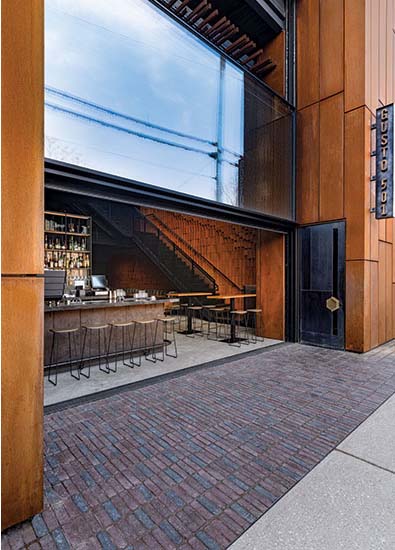
Broad expanses of glass slide together to open up the front facade in good weather. Photo Courtesy PARTISANS, click to enlarge.
Gusto 501’s main floor centers around a curvy Italian pizza oven, and opens onto busy King Street East with a wall of three horizontal 20-foot-wide glass panels. The panels are stacked one atop the other and, at the touch of a button, retract from the top and bottom to the middle, allowing walk-up coffee service and al fresco dining on the ground floor and admitting fresh air to the top-level dining area. A grand stair rises through the center of the restaurant beneath a skylight. It leads to a mezzanine dining area and then continues to the second floor (which has separate spaces front and back), and, finally, to a roof deck. “You could have five independent events going on,” Friedman explains, “or a wedding that occupies the entire building, or some kind of performance that occupies the central stair.” It’s a unique offering in the neighborhood, which is composed of light industry and 19th-century housing, but is now seeing residential towers rise by the dozen.
The interior experiences are varied. The second-floor rear space functions as a cocktail bar, and it is appropriately moody and dim. The level’s front end, however, looks through the glazed elevation onto a freeway overpass a block away; cars whiz past, providing a metropolitan hum that is not very Italian but is undeniably dramatic. This space, which has its own kitchen, is conceived as a stage for culinary drama. Owner Janet Zuccarini imagines it as a place to bring in the chefs of her seven-restaurant empire—which includes the acclaimed Felix in Venice Beach, California—for guest stints. It’s a place to test out menu options, and give chefs a chance to experiment or, simply, a place to seat overflow diners from the main part of the restaurant.
A composition of discrete dining areas, Gusto 501 will allow for flexibility when it reopens in the wake of the COVID-19 pandemic (1). Clay brick in 24 profiles brings a dynamism to the interior (2). Photos © Nic Lehoux
One material holds the building together, in spectacular form. The interior walls are clad with a three-dimensional layer of clay bricks. The hollow 6-by-12-by-12-inch units, colloquially known as “speed tile,” were custom-fabricated by Cleveland’s Sandkuhl Clay Tile, which formed the units to create 24 different profiles. These range from flat tiles to projecting rectangles, with many different diagonal cuts in between. The architects, employing BIM, have arranged 6,500 of these along the walls to serve several purposes. The first is visual: as you move up the main stair, the clay crests like a wave alongside you, its ripples extending all the way to the ceiling, to stunning effect. The irregular patterns also diffuse sound, while the individual tiles contain recessed sconces, which scatter the light across the warm surface of the clay. Finally, they conceal the restaurant’s mechanicals; custom clay grates cover the air vents.
It’s a creative use of a humble material. Speed tile was once common in North America, employed as infill for walls, much as concrete block is today. (PARTISANS recently encountered them while gut-renovating a 1920s office tower in downtown Toronto.) They remain common across much of the rest of the world today. For Zuccarini, they bring back childhood memories of working on sites with her housebuilder father in Italy.
For the architects, this building has its own significance: it’s their first ground-up project. Over less than a decade in practice, PARTISANS, co-led by Alexander Josephson, Pooya Baktash, and Jonathan Friedman, has taken on projects at a range of scales, from a bar interior to the master plan for an exurban township that could accommodate 150,000 people. The firm now has a staff of about 20. But the restaurant’s role as a showpiece for the firm has become complicated. It debuted in February, about a month before COVID-19 shut the city down; and while the opening attracted full houses and critical praise, this will be a very difficult year for the business, along with the rest of the hospitality industry. Will diners return? Will Gusto 501 thrive once the crisis subsides? “Absolutely,” Friedman says with emphasis. “There’s going to be a strong desire to get back to ordinary things. Wanting to have dinner, to have a glass of wine in a social setting, is going to come back. That desire to make connection—it’s just part of being human.”
Credits
Architect:
PARTISANS — Jonathan Friedman, Alexander Josephson, Pooya Baktash, Benjamin Salance, Tim Melnichuk, Ivan Vasyliv
Engineers:
Blackwell Structural Engineers; BK Consulting (m/e); RDH Building Science (building envelope); Picco (terra-cotta masonry, structural)
Interior Décor Consulting:
Wendy Haworth Design Studio
General Contractor:
Boszko & Verity
Client:
Gusto 54 Restaurant Group
Size:
9,500 square feet
Cost:
Withheld
Completion Date:
February 2020
Sources
Terra-Cotta Masonry:
Sandkuhl
Insulated Metal Panel:
Kingspan
Glazing:
Panoramah!
Moisture Barrier:
Blueskin; Tremco Paraseal
Paints & Stains:
Sherwin-Williams
Resilient Flooring:
Altro
Rubber Stair Tread:
Johnsonite

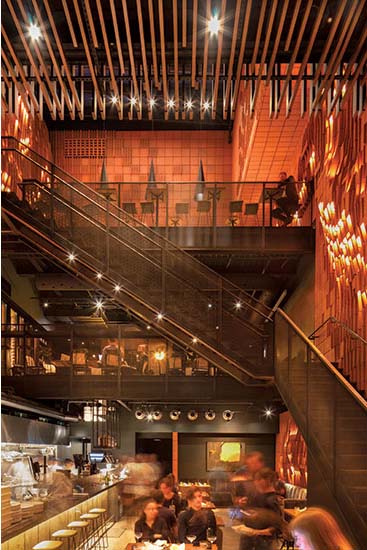
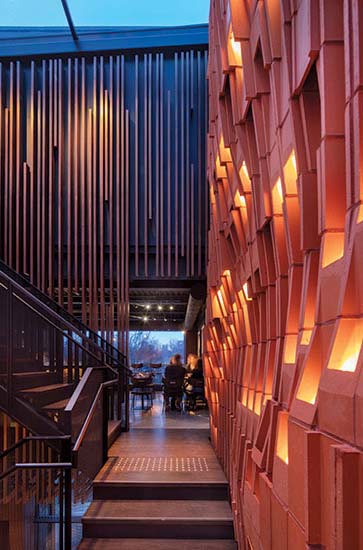
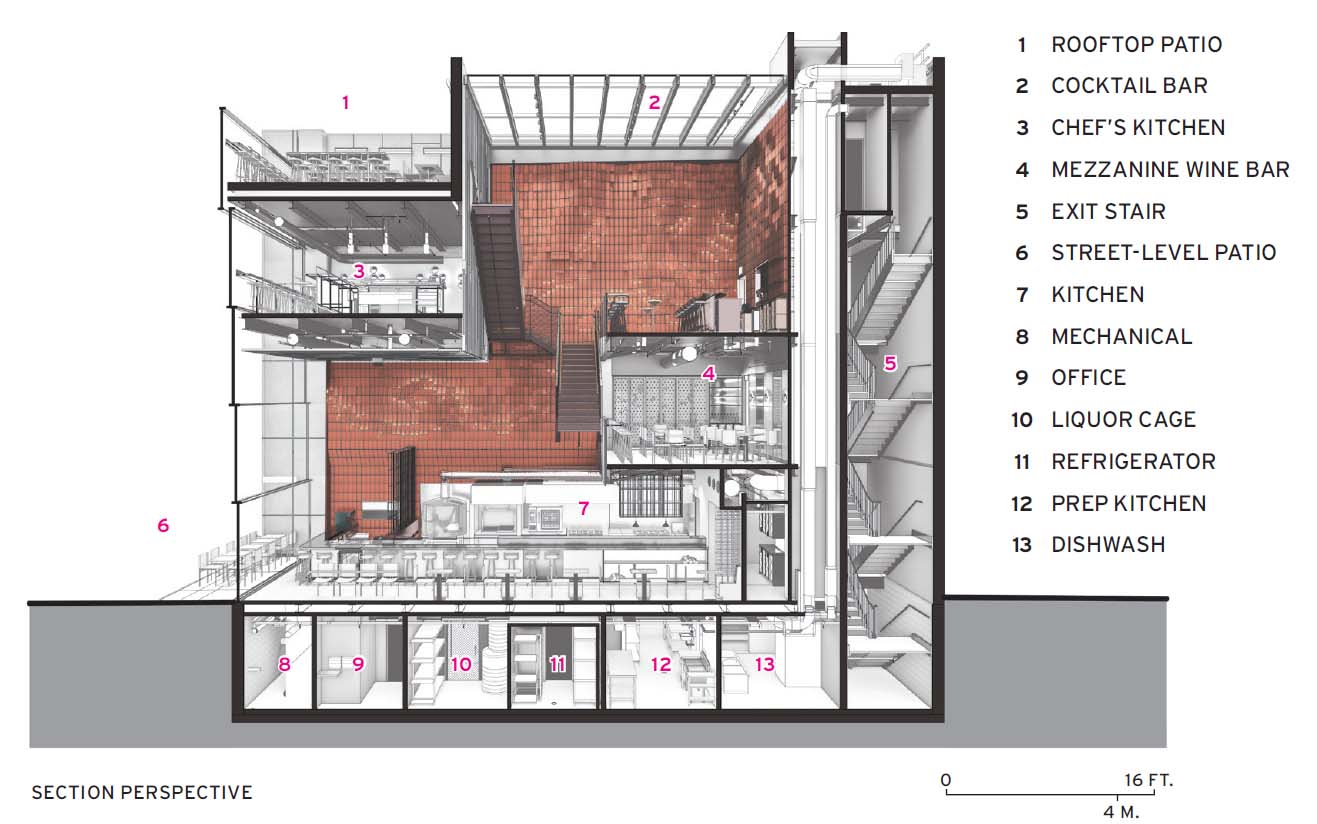

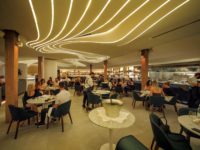
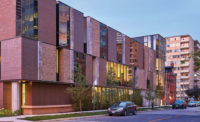
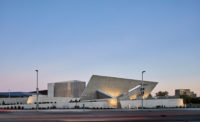
Post a comment to this article
Report Abusive Comment